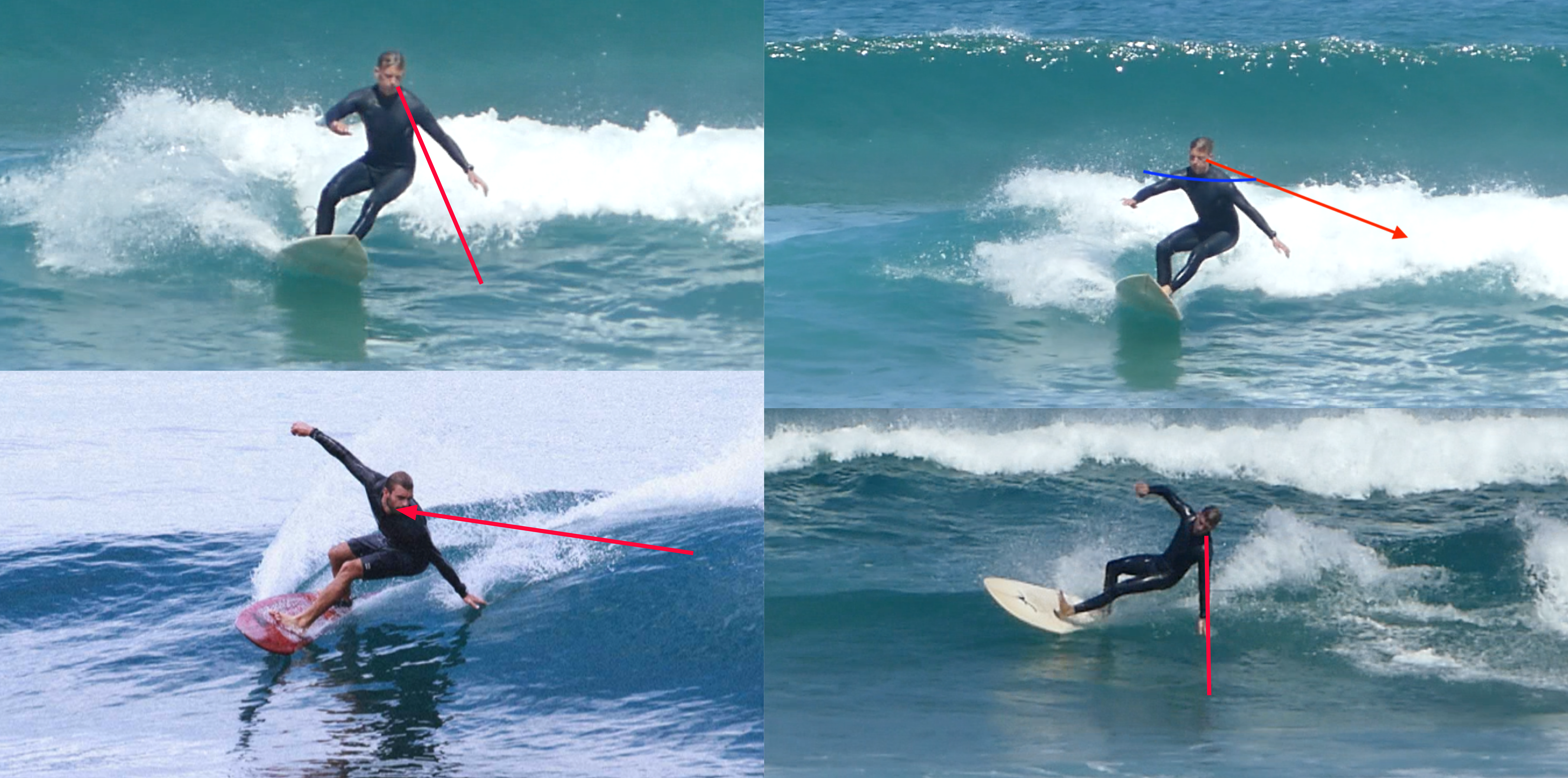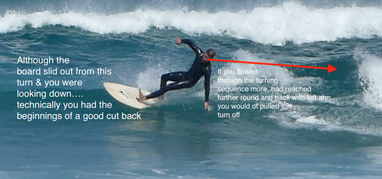
Peak Analysis
Its is often very helpful to let the first couple of waves in a set pass so you can analyse by watching from behind; the speed, angle they hit the sandbank, possible sections and ultimate positioning for take off. This will give you a good idea of similar patterns in the sets, it won’t always be regular like a machine but there will be similar patterns and its your ability to sensitise to these patterns that will give you a higher percentage of successful wave count.
This analysis starts from your arrival at the beach, through your warm up, paddling out through the channel & sitting out back and intermittent re assessment from the beach or a vantage point. Ask yourself how are the conditions changing over time?
For example; the water flooding back out in the channel mid tide, changing the channel water depth & how that affects the speed or steepness the waves peel into it. Zavial & Amado can be good examples of this. As the first wave of a set can hit straight and needs the rip to fill with ebbing flow to deepen the channel, ebbing to create an opposing force, water preventing a close out, breaking up the incoming swell, holding open the the wave face or creating a more triangular shaped peaks.
Once you selected your wave, ensure that you keep a visual on the shape as it forms behind BOTH shoulders, adjusting your speed & angle of approach accordingly. Smaller/fatter/slower waves perhaps you want to take a higher line, top 1/3 & 30* angle from the get go. Larger waves with fatter shoulders perhaps a deeper bottom turn extending the turn, compressing, holding the lead arm extended forward almost touching the wave face ensures compression & on rail until the lip section becomes critical enough to extend into the top turn. Medium sized faster waves mid face turn and all waves in between!
Learning Objectives:
- Experiment with different wave shapes, different angle of approach & lines drawn on the face.
- Always ensure during pop up to keep your weight distribution controlled and rail engaged by leaning on the inside rail & looking down the line (not down!).
- A good pop up from prone can be your first turning manoeuvre to set rail and line.

Line to bottom turn
Line to bottom turn: once to the feet, ensure your focus is shared between the wave down the line & also above your shoulder. Try to keep compressed with 60% weight front foot, through bottom turns. The bottom turn, think more carve and less using your upper body to rotate out of the carve too early. "Smooth off the bottom, explode off the top”. Hold the rail twice as long as feels normal to extend the rail turn, maintain/generate speed. Try not to transfer weight to back foot from bottom turn, otherwise you will stall. Too many directional changes breaks the rail line and creates drag & friction between water & surfboard. Hold the rail line.

The technique to help with this; look to the direction you wish to travel, use your lead arm (lead arm for regular surfer on front side bottom turn is your right arm), reaching forward and out. Think of the lead arm as a pivot point. If you reach back with your lead arm the weight will transfer to the back. If you need, adjust your foot position to locate on tail pad to add pressure to the fins for drive & thrust out of the turn.
Learning objectives:
- Look to the wave
- Compression
- Back foot position & weight distribution
- Carving bottom turn holding rail twice as long
- Right arm to pivot right carve, left arm to pivot left carve
Top line speed & drive
Top line for speed & initial drive, front side: some waves will be too small and gutless or even have an initial section to negotiate. In this case you need to take a higher line from the take off to couple of pumps to generate speed to bottom turn and critical section turn.
This technique can also be used to generate down the line speed to an air section. Experiment with adjusting your feet position to help technique. Some surfers move both feet more forward, or some keep back foot on tail pad and just increase stance width by moving forward just the front foot. Some surfers don’t move their feet at all. This will come down to your individual stance, length of legs & shape & sweet spot of surfboard. Watch Gabriel Medina, Filipe Toledo building to an air section compared to Jordy Smith or Owen Wright, compare their different foot positions and whether they move their feet or plant their stance.
Learning objectives:
- Ensure you vision is down the line
- Compression to extension
- Lead arm hits thigh
- During extension up wave face, both hands clap forward..so you unweight the surf board as you extend.
- Try not to fully extend
- After extension to compression and driving the opposite arm (in your case your left arm back down)
- Practice this technique on SmoothStar
- Analyse clips from Medina, Toledo, Owen Wright & Jordy

Line to front side roundhouse cutback; the turning sequence
Line to front side roundhouse cutback & the turning sequence. If a decent steep section does not present itself for a critical lip turn you will need to cutback to the power source/the pocket. From the high line drive, preferably not from a deep, carving bottom turn; compress at the top of wave. Start to look back to the pocket. Reach out with lead pivot arm, in this case your left hand, palm up to help open the shoulders and touch the wave face. Start to drive around with your right arm, using the torque & kinetic energy to flow through the turning sequence. The last thing that should drive through the turn is your feet and surfboard. Hold the rail & compression to maintain speed, time your extension to unweight just before the foam or eyed critical section to rebound or lip turn.

Learning objectives:
- Look to where you want to go
- Compress
- Back foot position
- Turning sequence starts with eyes, to head, to arms, to shoulders, to hips, to legs, to feet, to fins and rail.
- Extension of upper body to travel to top turn
- Flow through the Turing sequence, hold the rail don’t rush the turn
Session video clips
#Click2Rip button below to contact Justin West Coaching for information on how he can advance your surfing levels.

